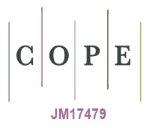Characterization and Antioxidant Activity of Platinum Nanoparticles Synthesized by Using Cetraria Islandica Extract
DOI:
https://doi.org/10.23851/mjs.v33i5.1308Keywords:
Cetraria islandica, Pt Nanoparticles, Antioxidant activityAbstract
Platinum nanoparticles (Pt NPs) have structural properties that differ from their bulk forms, such as physical and chemical properties. The cost and toxicity problems caused by the synthesis of Pt NPs, which are widely used in biomedical fields, by laser ablation, aerosol, sol-gel, co-precipitation, and chemical reduction techniques are eliminated by the biological synthesis method. In this study, the biosynthesis of Cetraria islandica extract based Pt NPs was performed in PBS buffer (pH 7.4) and their antioxant activity was evaluated. With FE-SEM images, it was observed that Pt NPs had a spherical structure, aggregation tendency and an average diameter of 62 nm. The presence of Pt in the structure of NPs was observed by EDX analysis. With the peaks obtained by FT-IR analysis, the presence of C=O (amide), C-O (aliphatic ether), CO-O-CO (anhydride), C=C (alkene) and Pt were recorded and biomolecular groups that play a role in the synthesis were revealed. It was determined that Pt NPs synthesized via C. islandica extract had antioxidant activity (92.4 ug/ml, R2=0.8727). As a conclusion, biosynthesis of Pt NPs with C. islandica extract was carried out as an alternative to physical and chemical methods, and its antioxidant activity was revealed. It is thought that the obtained data can be used in biomedical fields.
Downloads
References
K.Bloch, K.Pardesi,C. Satriano, ,S. Ghosh, Bacteriogenic Platinum Nanoparticles for Application in Nanomedicine, Frointers in Chemistry, 9, 624344, 2021.
M.O. Mavukkandy,S. Chakraborty, T. Abbasi, S.A. Abbasi,. A Clean-Green Synthesis of Platinum Nanoparticles Utilizing a Pernicious Weed Lantana (Lantana Camara), American Journal of Engineering and Applied Sciences, 9 (1):PP 84-90,2016.
S.A.Fahmy, I.M. Fawzy, B.M. Saleh, M.Y. Issa, U.Bakowsky, H. Azzazy, H. Green Synthesis of Platinum and Palladium Nanoparticles Using Peganum harmala L. Seed Alkaloids: Biological and Computational Studies. Nanomaterials, 11, 965, 2021.
A.Ayguna, F. Gülbagcaa, L.Y. Ozerb, B.Ustaogluc, Altunogluc Y.C., Balogluc M.C., Atalard M.N., Almae M.H., Sena F. Biogenic platinum nanoparticles using black cumin seed and their potential usage as antimicrobial and anticancer agent. Journal of Pharmaceutical and Biomedical Analysis179:112961, 2020.
C. Soundarrajan,A. Sankari, P. Dhandapani, S.Maruthamuthu, S. Ravichandran,G. Sozhan,N. Palaniswamy. Rapid biological synthesis of platinum nanoparticles using Ocimum sanctum for water electrolysis applications. Bioprocess Biosyst. Eng.;35:pp.827-833, 2012
B. Sahin,A. Aygün, H. Gündüz,K. Sahin, E. Demir, S. Akocak,F. Sen. Cytotoxic effects of platinum nanoparticles obtained from pomegranate extract by the green synthesis method on the MCF-7 cell line. Colloids Surf. B Biointerfaces. 2018;163:pp.119-124,2018.
D.S.Sheny, D. Philip, J. Mathew. Synthesis of platinum nanoparticles using dried Anacardium occidentale leaf and its catalytic and thermal applications. Spectrochim. Acta A Mol. Biomol. Spectrosc.;114:pp.267-271, 2013.
S. Ghosh, R. Nitnavare,A. Dewle, G.B.Tomar, R. Chippalkatti.,P. More, B.A., B.A. Chopade. Novel platinum-palladium bimetallic nanoparticles synthesized by Dioscorea bulbifera: Anticancer and antioxidant activitiesInt. J. Nanomed.;10:pp7477-7490, 2015.
A.Thirumurugan, P. Aswitha,C. Kiruthika, S. Nagarajan,A.N. Christy. Green synthesis of platinum nanoparticles using Azadirachta indica-An eco-friendly approach. Mater. Lett.;170:pp,175-178,2016.
J.Y, Song,E.Y. Kwon ,B.S. Kim Biological synthesis of platinum nanoparticles using Diopyros kaki leaf extract. Bioprocess Biosyst. Eng.;33:159-164, 2010.
V.Vinod,P. Saravanan, B.Sreedhar, D.K.Devi, R.A. Sashidhar. facile synthesis and characterization of Ag, Au and Pt nanoparticles using a natural hydrocolloid gum kondagogu (Cochlospermum gossypium) Colloids Surf. B Biointerfaces. 83:291-298, 2011.
S. H. Sun,D. Q. Yang,D. Villers,G. X. Zhang,E. Sacher,J. P. Dodelet. Template and surfactant-free room temperature synthesis of self-assembled 3D Pt nanoflowers from single-crystal nanowires, Advanced Materials, 20: 571-574, 2008.
R..Dobrucka. Antioxidant and catalytic activity of biosynthesized CuO nanoparticles using extract of galeopsidis herba. Journal of Inorganic and Organometallic Polymers and Materials, 28: 812-819, 2018.
S.H. Mohammed,A. Rheima,F.,M.F. Al-jaafari, Z. Abbas, Z.Green synthesis of Platinum Nanoparticles using Olive Leaves Extracts and its Effect on Aspartate Aminotransferase Activity. Egyptian Journal of Chemistry, 65, 377-382,2022.
H. Hu, F. Wang, X. Ding, S. Imhanria, W.Wang, J. Zhang,. Green fabrication of Pt nanoparticles via tea-polyphenols for hydrogen peroxide detection. Colloids and Surfaces A: Physicochemical and Engineering Aspects, 637, 128201,2022.
A.S. Eltaweil, M. Fawzy, M.Hosny, E.M.Abd El-Monaem, T.M.Tamer, A.M.Omer. Green synthesis of platinum nanoparticles using Atriplex halimus leaves for potential antimicrobial, antioxidant, and catalytic applications. Arabian Journal of Chemistry, 15, 103517,2022.
H.A. Widatalla, L.F. Yassin, A.A.Alrasheid, S.A.R. Ahmed, M.O Widdatallah, S.H. Eltilib, A.A. Mohamed, A.A. Green synthesis of silver nanoparticles using green tea leaf extract, characterization and evaluation of antimicrobial activity. Nanoscale Advances 4,PP 911-915,2021
M.Hosny, M.Fawzy, A.M. Abdelfatah, E.E. Fawzy, A.S. Eltaweil. Comparative study on the potentialities of two halophytic species in the green synthesis of gold nanoparticles and their anticancer, antioxidant and catalytic efficiencies. Adv. Powder Technol. 32, 3220- 3233,2022.
F. Ijaz,S. Shahid,S.A. Khan,W. Ahmad, , S. Zaman. Green synthesis of copper oxide nanoparticles using Abutilon indicum leaf extract: Antimicrobial, antioxidant and photocatalytic dye degradation activities. Tropical Journal of Pharmaceutical Research, 16 (4): 743-753, 2017.
Downloads
Key Dates
Published
Issue
Section
License
Copyright (c) 2022 Haydar Matz Muhy

This work is licensed under a Creative Commons Attribution-NonCommercial 4.0 International License.
(Starting May 5, 2024) Authors retain copyright and grant the journal right of first publication with the work simultaneously licensed under a Creative Commons Attribution (CC-BY) 4.0 License that allows others to share the work with an acknowledgement of the work’s authorship and initial publication in this journal.






















